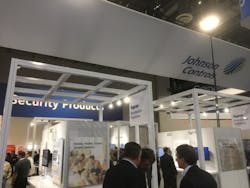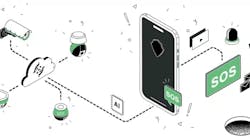One of the chief desires of security integrators and end-users today is for a more seamless integration of systems. Gone are the days when siloed architectures provided the capabilities that security departments were looking for. The advent of IP-enabled technology has resulted in a proverbial sea of change in the expectations of the industry, which now demands that video surveillance, access control and other security systems all reside on a unified platform.
But while many manufacturers have embraced the convergence of physical security with IT and shaped their product roadmaps with integration in mind, others have been slower to adapt. Johnson Controls, which boasts one of the industry’s broadest product portfolios, recently decided that it too needed to reorganize to better meet the needs of the marketplace. One of the first orders of business for Eli Gorovici, General Manager, Tyco Access Control and Video Solutions for Global Security Products, Johnson Controls, was to merge their video surveillance and access control teams together into a single business unit.
“The first thing we heard from customers is, ‘video and access are coming together.’ We said, let’s put the two teams together,” explains Gorovici, who took over the businesses about five months ago. “We have great products, leading products but we understand we need to move forward.”
According to Gorovici, the new “Tyco Access Control and Video Solutions” business unit been organized around four pillars, which include:
- Unification. Having unified their video surveillance and access control offerings, Gorovici says that they have already largely accomplished this goal and points to a new access control solution that they debuted at ISC West 2019 as a prime example of how they’re bringing the two together. The solution leverages a camera with facial recognition software as a way to provide frictionless access control.
- Cloud Solutions. While the bulk of video surveillance deployments remain on-premises solutions, Gorovici says they believe that the industry will move almost entirely to the cloud at some point in the future and says they are preparing their portfolio for the transition. One of the ways they intend to do this is through the use of hybrid solutions. “Every product we have here today – video or access control – can extend to the cloud as much as you want or as little as you want,” he says.
- Cybersecurity. As evidenced by the Mirai distributed denial of service (DDoS) attack several years back as well as the number of publicized vulnerabilities in recent years, physical security systems, particularly video surveillance, remain ripe targets for malicious cyber actors. To combat this, Gorovici says Johnson Controls is investing heavily in the cybersecurity of its products and offering a variety of services to help integrators and end-users combat cyber threats.
- Automation. Last but certainly not least, the company is also looking into how it can leverage artificial intelligence (AI)/machine learning solutions to help bring greater automation to things like video monitoring. “This is game-changing technology. It is going to change all of our lives, not just in security, but the whole technology world and it has major impacts on our business,” Gorovici adds.
Because end-users are collecting more data than ever before with the help of surveillance cameras and other security sensors, Gorovici says the company is also focused on incorporating technologies into their existing product lines to give customers a greater ability to leverage this wealth of information that is at their fingertips.
“The ecosystem is changing. It used to be cameras on poles, now you have drones, body-worn cameras, and mobile credentials… so we’ve built – mainly on the enterprise side but not only there – sensors to get all of this data,” he adds. “AI is about collecting data. What do I do with it? I have to take it and make sense out of it.”
The new structure is also conducive to the company’s R&D and go-to-market strategy, according to Gorovici, as it aligns the rest of the organization with their sales approach of tailoring solutions to meet the needs of different customers.
“It just makes sense. Enterprise customers have an enterprise solution for video and access control. The mid-market has different needs,” he explains. “There is a general manager for the enterprise, a general manager for the mid-market and a general manager for cloud solutions. That’s how the new organization is structured.
“We have an engineering team for video surveillance, an engineering team for access control, and now we have separate engineering teams for artificial intelligence, cyber and cloud,” he continues. “We’re not just saying this is what we’re doing but we’re putting our money where our mouth is.”
About the Author:
Joel Griffin is the Editor of SecurityInfoWatch.com and a veteran security journalist. You can reach him at [email protected].


